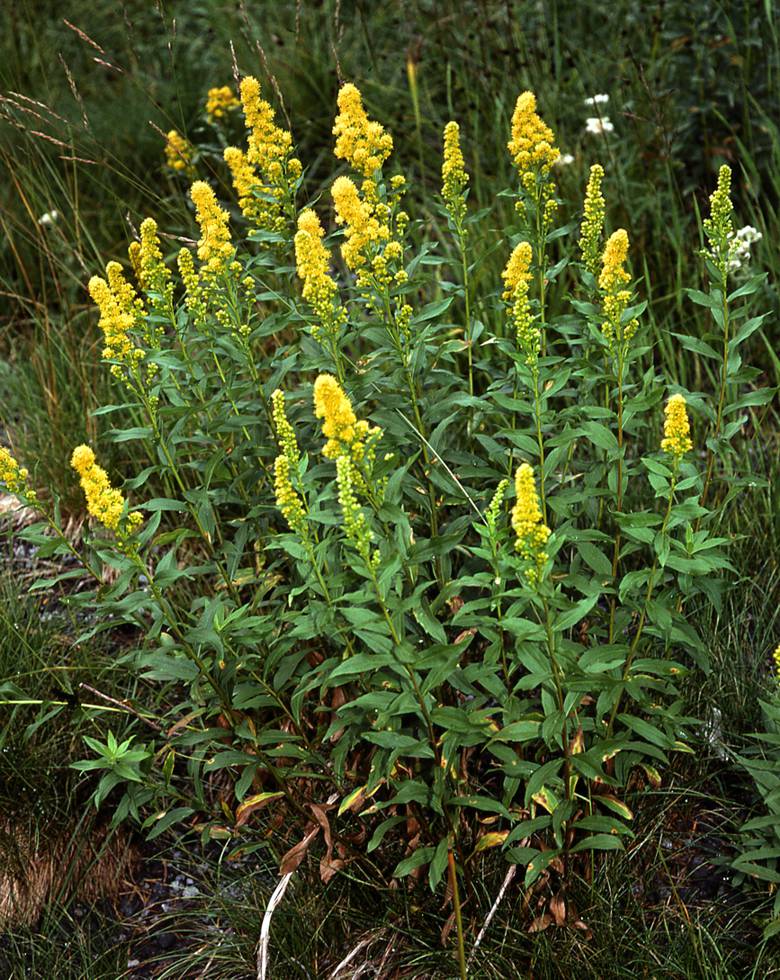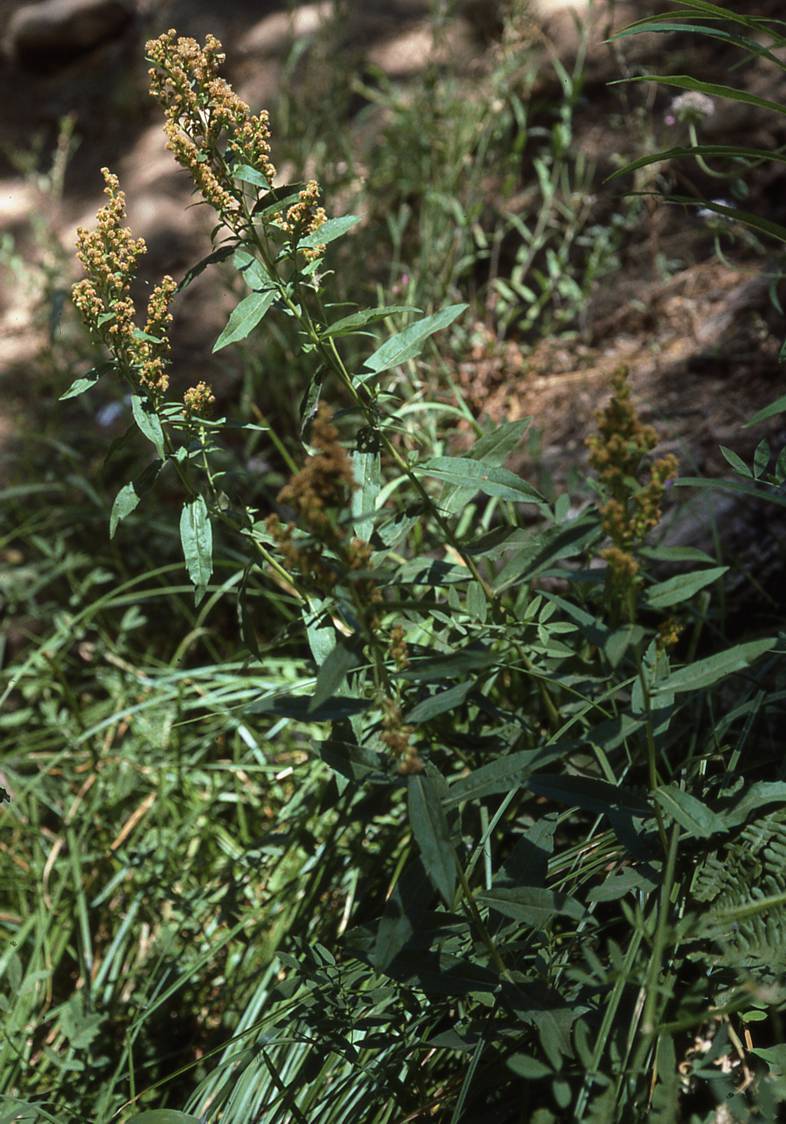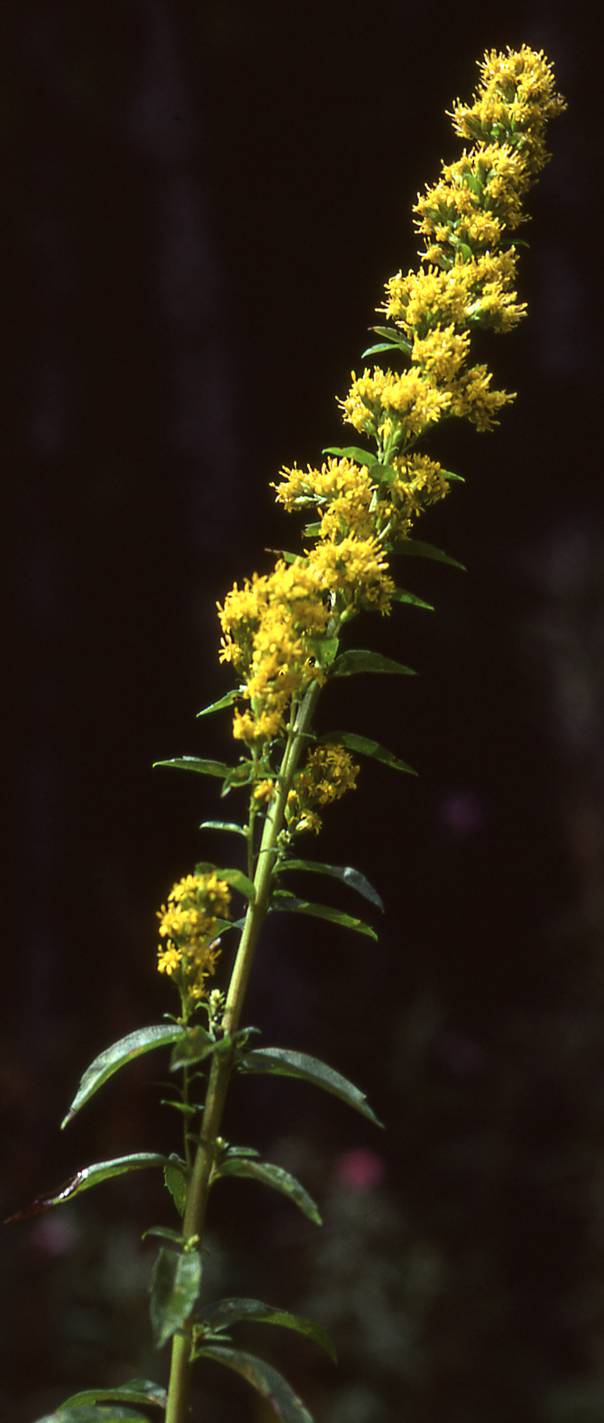West Coast or Cascade Canada Coldenrod
Solidago elongata Nutt. is native to the Cascades and Coastal Ranges from southwestern British Columbia to the mountains of California. It is distinguished in subsect. Triplinervae by its non-glandular, often elongated club-shaped inflorescence (2–3(–5) times as long as wide) with ascending branches (Semple & Cook 2006 FNA); short club-shaped and secund tipped inflorescences sometimes develop. It occurs in sandy, gravelly soils of coastal headlands, thickets, open woods, meadows, and streams and creeks banks from southern British Columbia south to central California. The species can be similar to S. lepida var. lepida, which is usually much more glandular on inflorescence parts. Semple et al. (2013) compared S. elongata to S. canadensis, S. fallax, and S. lepida in a study focusing on taxa in eastern North America. Semple et al. (2017) compared S. elongata to the western North American forms of S. altissima, S. gigantea and S. lepida and found strong statistical support for recognizing S. elongata.
Fernald (1915) incorrectly applied a combination S. lepida var. elongata (Nutt.) Fern. to plants from Québec and Newfoundland that belong in S. bartramiana Fern. (synonym: S. brendae Semple; Semple 2023).
The species is diploid (2n=18) throughout its range with a few scattered tetraploids (2n=36) reported. Semple and Chmielewski (2022) reviewed published counts and presented a cytogeography map for S. elongata.
Semple, J.C. 2013. A new species of Triplinerviae goldenrod in eastern Canada (Asteraceae: Astereae): Solidago brendiae. Phytoneuron 2013-57: 1–9.
Semple, J.C., H. Faheemuddin, Y.A. Chong, M.K. Sorour, J.A. Hood, I. Khamis, Y. Ma, and K. Kornobis. 2013. A multivariate morphometric study of the Solidago canadensis / S. lepida complex of Solidagosubsect. Triplinerviae. I. Northeastern taxa (Asteraceae: Astereae). Phytoneuron 2013-58: 1–20. [includes specimens of S. elongata]
Semple, J.C., H. Faheemuddin, M. Sorour, and Y.A. Chong. 2017. A Multivariate studies of Solidago subsect. Triplinerviae in western North America: The Solidago lepida complex (Asteraceae: Astereae). Phytoneuron 2017-47: 1–43.
Semple, J.C. and J.G. Chmielewski. 2022. Cytogeography of Solidagoser. Canadenses (Asteraceae: Astereae): S. brendae, S. canadensis, S. elongata, S. fallax, S. lepida, S. rupestris, S. shortii, and S. turneri. Phytoneuron 2022-57. 1-17.
Semple, J.C. 2023. On Solidago bartramiana, S. brendae, and S. canadensis (Asteraceae: Astereae). Phytoneuron 2023-29: 1–9.
Last revised 14 April 2025 by J.C. Semple
© 2025 J.C. Semple, including all photographs unless otherwise indicated
1-4. Solidago elongata. 1. Multiple shoots, Semple & Brouillet 7099, Hood River Co., Oregon 2. Shoots, Semple & Heard 8406, Sierra Co., California. 3. Long narrow inflorescence, Semple & Brouillet 7114, Clatsop Co., Oregon. 4. Range map.







